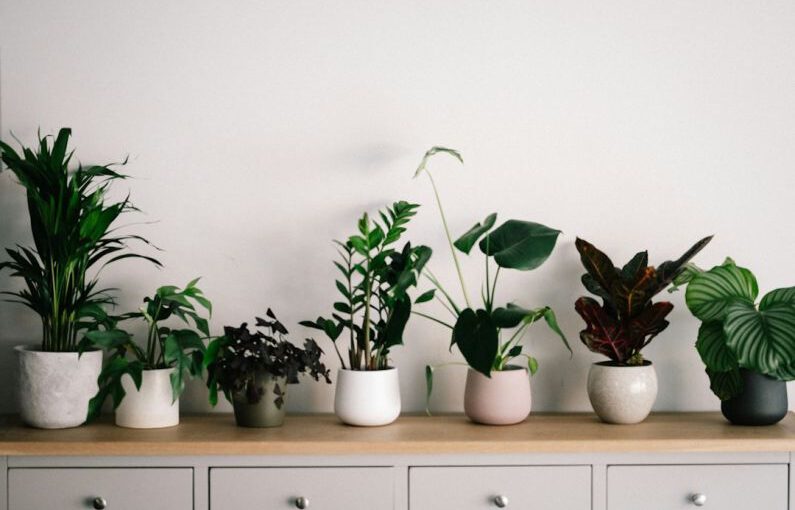When it comes to creating a healthy indoor environment, one often overlooked aspect is the quality of the air we breathe. Indoor air pollution can be a significant concern, as many common household items and activities can release harmful toxins into the air. One effective way to combat this issue is by incorporating houseplants into your living space. Not only do plants add a touch of nature to your home decor, but they also have the ability to purify the air, making it fresher and cleaner. In this article, we will explore some of the best plants for improving indoor air quality.
**Peace Lily**
The Peace Lily is a popular choice for indoor plants due to its elegant white flowers and low maintenance requirements. In addition to its aesthetic appeal, the Peace Lily is also an excellent air purifier. It can remove common indoor pollutants such as formaldehyde, benzene, and trichloroethylene. This plant thrives in low light conditions, making it perfect for rooms with limited sunlight.
**Spider Plant**
The Spider Plant is another great option for improving indoor air quality. This resilient plant is known for its ability to remove toxins like formaldehyde and xylene from the air. Spider Plants are easy to care for and can adapt to a variety of lighting conditions, making them a versatile choice for any indoor space.
**Snake Plant**
The Snake Plant, also known as Mother-in-Law’s Tongue, is a hardy plant that is nearly impossible to kill. It is highly effective at filtering out formaldehyde, trichloroethylene, and benzene from the air. Snake Plants are ideal for bedrooms, as they release oxygen at night, making them a great choice for improving sleep quality.
**Aloe Vera**
Aloe Vera is not only a handy plant to have for its soothing gel, but it also serves as a natural air purifier. This succulent is effective at removing formaldehyde and benzene from the air. Aloe Vera plants require minimal care and thrive in bright, indirect sunlight.
**Boston Fern**
The Boston Fern is a popular choice for indoor plant enthusiasts due to its lush foliage and air-purifying properties. This plant is excellent at removing pollutants like formaldehyde and xylene from the air. Boston Ferns thrive in humid conditions, so be sure to mist them regularly to keep them healthy and vibrant.
**Rubber Plant**
The Rubber Plant is a low-maintenance option that is effective at removing toxins like formaldehyde from the air. This plant has large, glossy leaves that add a touch of greenery to any space. Rubber Plants prefer bright, indirect light and occasional watering.
**English Ivy**
English Ivy is a versatile plant that can be grown indoors or outdoors. It is known for its ability to filter out airborne mold and other allergens, making it a great choice for those with respiratory issues. English Ivy is easy to care for and can thrive in a variety of lighting conditions.
**Conclusion: Creating a Healthier Indoor Environment with Plants**
In conclusion, incorporating houseplants into your indoor space is a simple and effective way to improve air quality and create a healthier living environment. The plants mentioned above are just a few examples of species that can help purify the air by removing harmful toxins. By introducing these plants into your home, you can enjoy cleaner, fresher air while adding a touch of natural beauty to your surroundings. So, why not bring a little piece of nature indoors and reap the benefits of improved air quality with these air-purifying plants?




